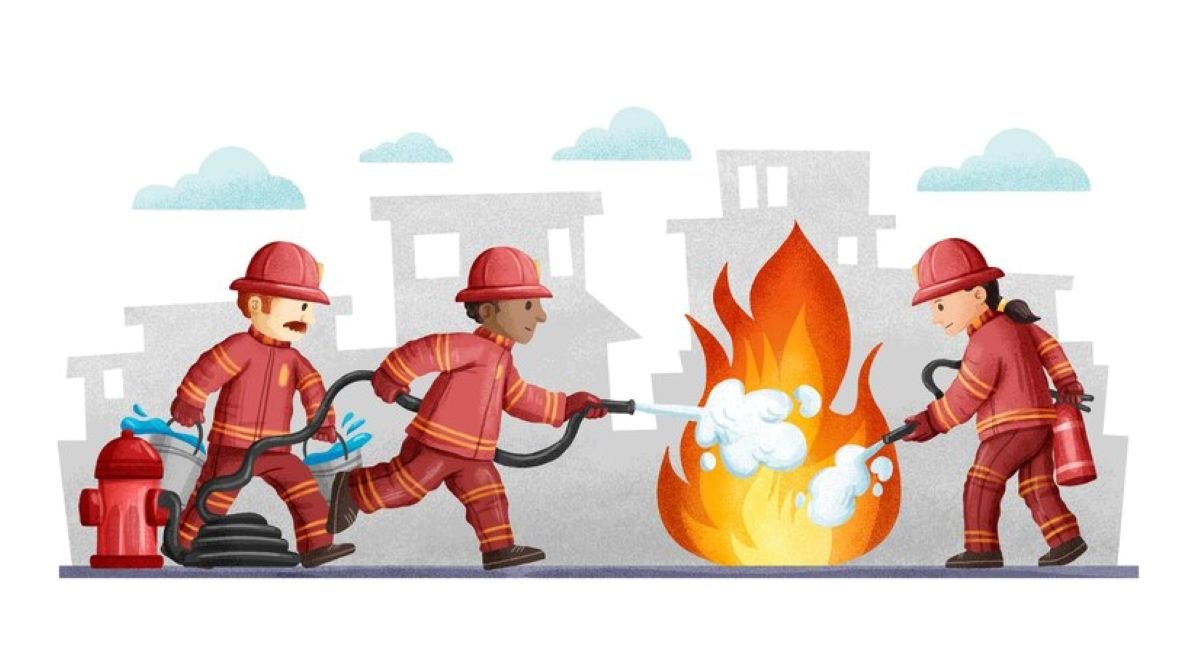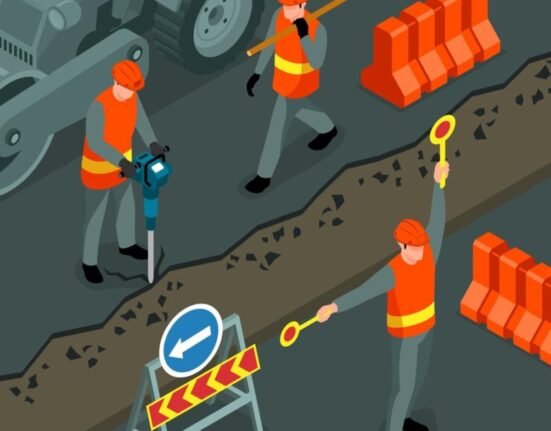In the dynamic landscape of factory operations, fire safety stands as a critical pillar of health and safety. This blog post embarks on a journey into the domain of Fire Safety, guided by principles of Health and Safety, to explore the strategies and measures that transform factory workers into guardians against the threat of fire. By addressing the challenges associated with fire risks and implementing effective safety protocols, factories can create an environment where both productivity and worker well-being flourish.
Understanding the Significance: The Nexus Between Fire Safety and Worker Well-being
Defining Fire Safety in Factory Operations
Fire safety encompasses a comprehensive set of measures and protocols implemented to prevent, detect, and respond to the threat of fire within a factory environment. General Administration recognizes that while factories are hubs of productivity, the presence of machinery, electrical systems, and various materials poses inherent fire risks. The intersection of fire safety and worker well-being is foundational to creating a secure and resilient work environment.
Impact on Health and Safety Metrics
The safety performance concerning fire safety directly influences overall health and safety metrics in a factory. General Administration acknowledges that fire incidents can have severe consequences, including injuries, fatalities, property damage, and operational disruptions. Prioritizing fire safety is not just a regulatory obligation but also a fundamental aspect of fostering a safe and healthy work environment.
Key Strategies for Ensuring Fire Safety in Factory Operations
Rigorous Fire Risk Assessments: Identifying and Mitigating Hazards
A cornerstone of fire safety is the implementation of rigorous risk assessments. General Administration mandates regular assessments to identify potential fire hazards within the factory. This involves evaluating the layout, machinery, electrical systems, storage practices, and other factors that may contribute to fire risks. Understanding these hazards allows for the development of targeted safety measures to mitigate risks and ensure a secure working environment.
Proper Storage and Handling of Combustible Materials: Minimizing Risks
The proper storage and handling of combustible materials play a pivotal role in fire safety. General Administration advocates for strict protocols that outline the correct procedures for storing, transporting, and using materials that pose fire risks within the factory. This includes proper labeling, segregation of incompatible materials, and adherence to specific storage requirements to minimize the risk of fire incidents.
Emergency Response Planning: Swift and Efficient Reaction to Fires
Establishing Comprehensive Emergency Response Plans
Preparedness for fire-related incidents is integral to fire safety. General Administration mandates the development of comprehensive emergency response plans that outline step-by-step procedures for dealing with fires. These plans include communication protocols, evacuation procedures, assembly points, and coordination with emergency services for a swift and efficient response.
Regular Fire Drills and Training
Regular fire drills and training exercises are crucial to validating the effectiveness of emergency response plans. General Administration ensures that workers are familiar with emergency procedures through practical drills that simulate various fire scenarios. This hands-on training enhances the ability of workers to respond swiftly and confidently in high-stress situations.
Fire Detection and Suppression Systems: Mitigating the Impact of Fires
Implementing Advanced Fire Detection Systems
Early detection is key to minimizing the impact of fires. General Administration advocates for the implementation of advanced fire detection systems, including smoke detectors, heat sensors, and flame detectors. These systems provide timely alerts, allowing for swift response and evacuation before the fire can escalate.
Utilizing Fire Suppression Technologies
In addition to detection, fire suppression technologies are essential for mitigating the impact of fires. General Administration explores the use of automatic sprinkler systems, fire extinguishers, and other suppression technologies strategically placed throughout the factory. These systems can contain and extinguish fires in their early stages, minimizing damage and protecting both property and lives.
Electrical System Safety: Preventing Electrical Fires
Regular Inspection and Maintenance of Electrical Systems
Electrical systems pose a significant fire risk in factories. General Administration mandates regular inspection and maintenance of electrical systems to identify and address potential hazards. This includes checking for faulty wiring, overloaded circuits, and damaged electrical equipment. Proactive maintenance measures contribute to preventing electrical fires.
Adherence to Wiring and Installation Standards
Ensuring adherence to wiring and installation standards is crucial for electrical system safety. General Administration emphasizes compliance with established standards for electrical wiring, equipment installation, and the use of explosion-proof materials in areas where flammable materials are present. Following these standards minimizes the risk of electrical fires and ensures the overall safety of the factory.
Employee Training and Awareness Programs: Building a Fire-Smart Workforce
Comprehensive Training on Fire Safety
Empowering the workforce with knowledge on fire safety is paramount. General Administration ensures that workers undergo comprehensive training programs that cover the identification of fire hazards, the use of firefighting equipment, evacuation procedures, and the importance of early reporting. Well-informed workers are better equipped to prevent fires and respond effectively in the event of an incident.
Regular Fire Safety Awareness Programs
In addition to training, regular fire safety awareness programs contribute to building a fire-smart workforce. General Administration conducts awareness sessions that highlight the importance of fire safety, share insights into recent incidents and their lessons, and provide updates on any changes in emergency response procedures. Increased awareness fosters a culture of vigilance and shared responsibility.
Regular Inspections and Audits: Ensuring Compliance and Identifying Gaps
Scheduled Safety Inspections
Regular inspections are conducted to ensure compliance with fire safety protocols. General Administration mandates scheduled safety inspections that assess the functionality of fire detection and suppression systems, the condition of firefighting equipment, and overall adherence to safety guidelines. These inspections identify potential gaps and enable corrective actions to be implemented promptly.
Transparent Reporting and Documentation
Transparent reporting and documentation of fire incidents and safety measures are essential for ongoing improvement. General Administration requires thorough documentation of safety inspections, fire drills, incidents, near misses, and corrective actions taken. This transparent reporting system fosters accountability, facilitates continuous improvement, and ensures that lessons learned from incidents are integrated into safety protocols.
Employee Feedback and Continuous Improvement: A Dynamic Approach
Feedback Mechanisms and Worker Involvement
General Administration values the feedback of workers who actively contribute to fire safety efforts. Establishing feedback mechanisms encourages workers to report any concerns, provide insights into the effectiveness of safety measures, and suggest improvements. Involving workers in the decision-making process fosters a culture of shared responsibility and continuous improvement in fire safety.
Continuous Monitoring and Adaptation
Fire safety is a dynamic aspect of factory operations. General Administration emphasizes continuous monitoring of fire safety practices and emerging technologies. This proactive approach allows for the adaptation of safety measures to changing conditions, new materials, and advancements in safety standards, ensuring that the factory remains at the forefront of fire safety.
Conclusion: Nurturing a Flame-Resistant Culture in Factory Operations
In conclusion, nurturing a flame-resistant culture in factory operations requires a comprehensive and proactive approach to fire safety. Guided by Health and Safety principles and General Administration, the strategies outlined above establish a framework for ensuring the secure and resilient operation of factories. By prioritizing risk assessments, comprehensive training, effective emergency response planning, and continuous improvement through feedback and monitoring, factories can transform their workforce into true guardians against the threat of fire. In this flame-resistant culture, productivity thrives, and workers enjoy a safer and more secure professional experience, ensuring the sustainable success of the factory.

















